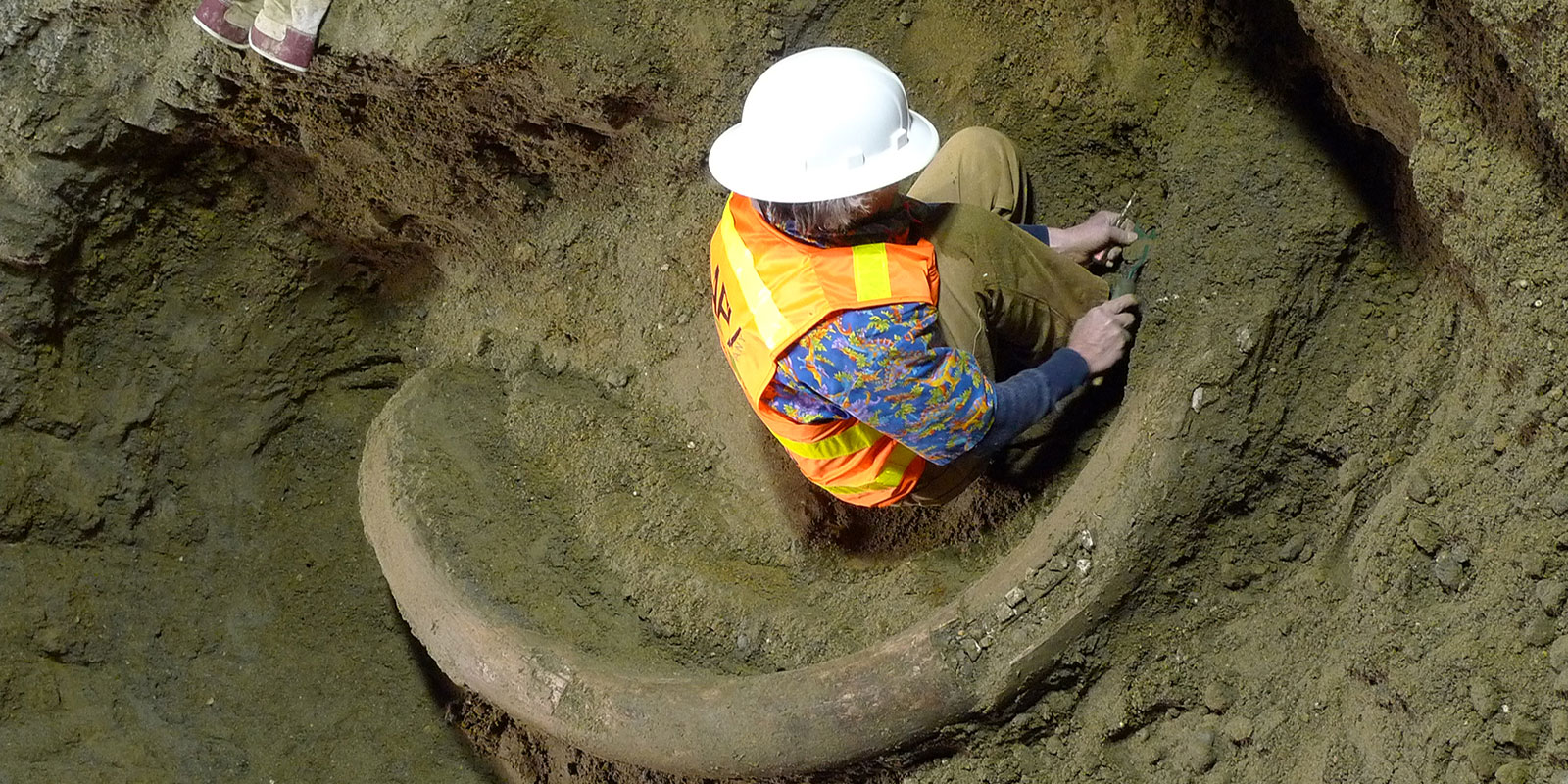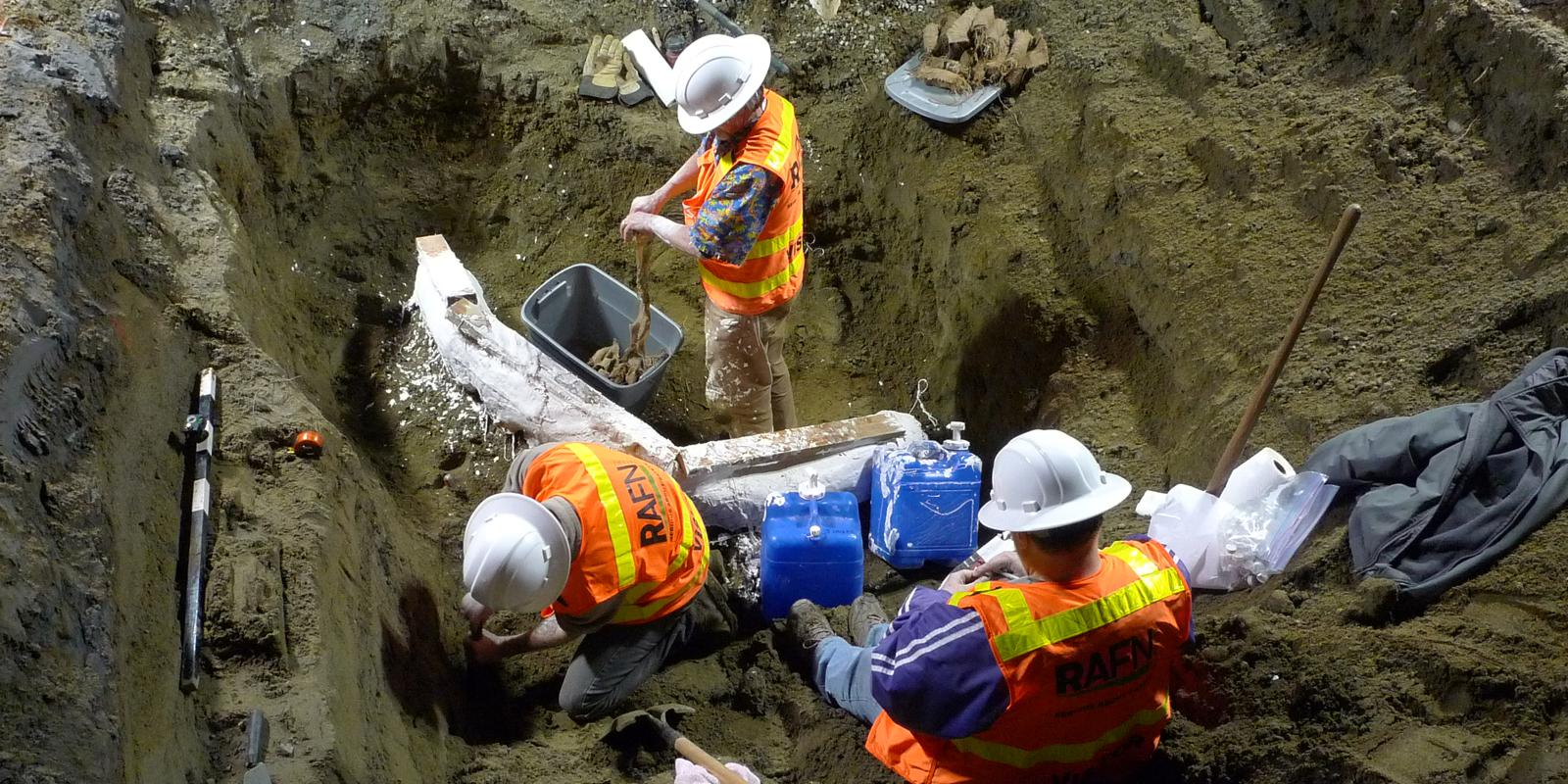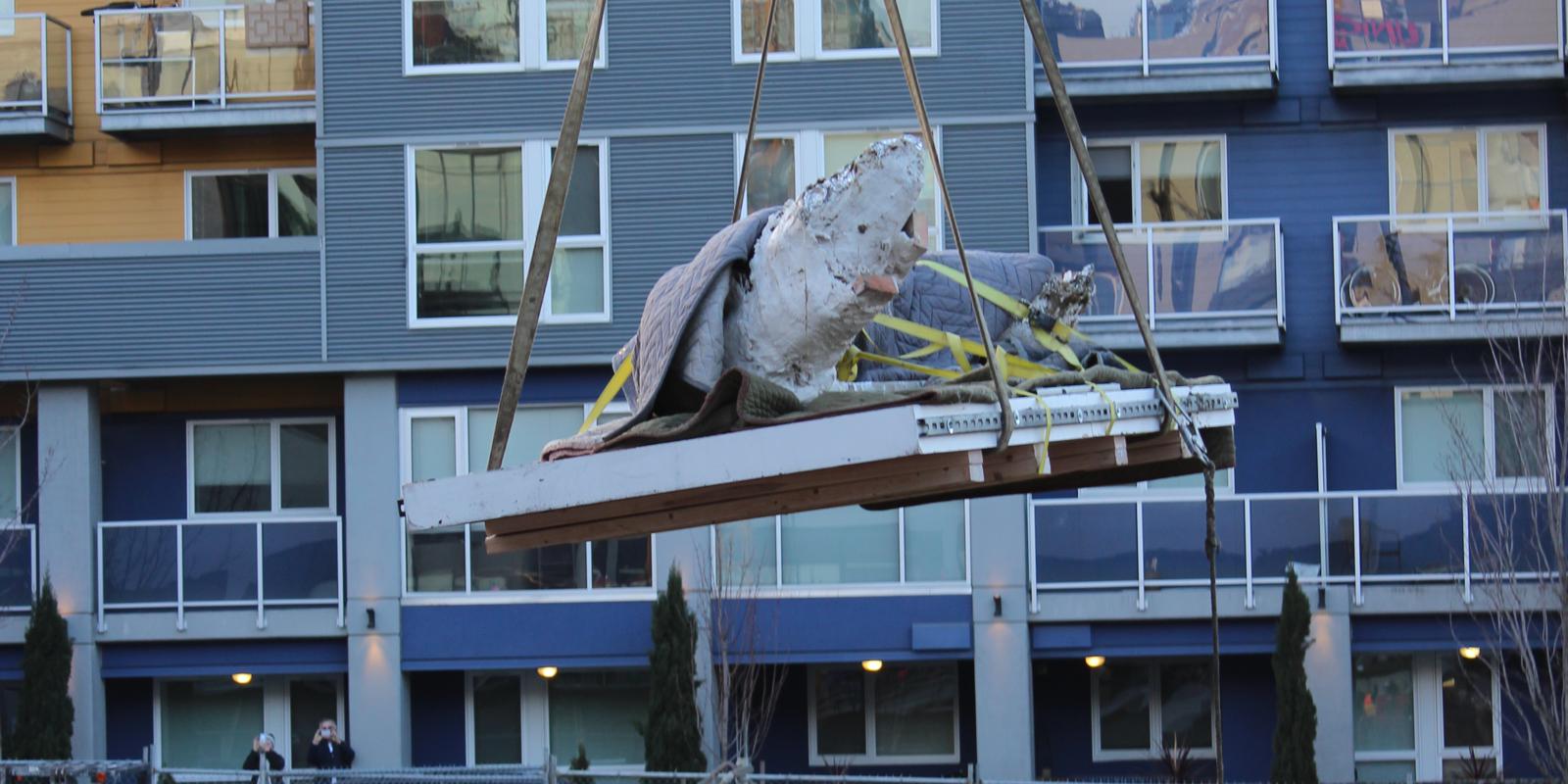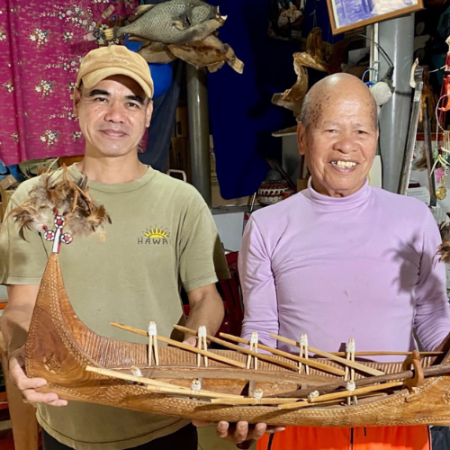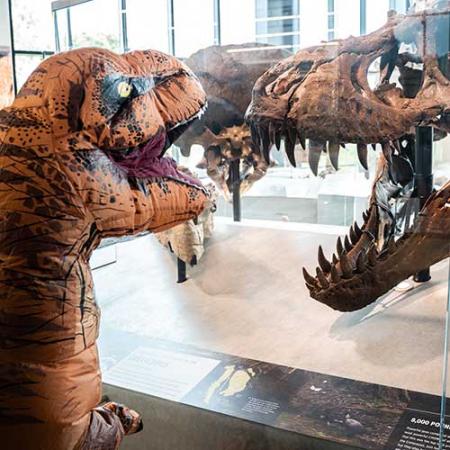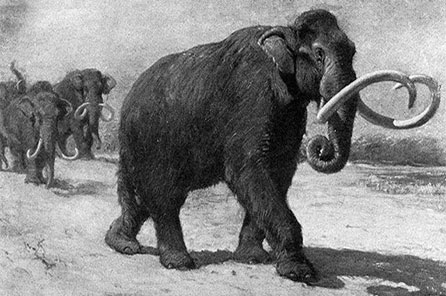
Later that day I met with Dr. Sidor at the Burke Museum along with Bruce Crowley, Burke Museum Fossil Preparator, and Bax Barton, Research Associate of Paleontology, to load up tools and collecting materials, such as shovels, awls, paint brushes, burlap strips, and plaster, before heading to the site to excavate the tusk.
We arrived at the site in South Lake Union around 3 p.m. and suited up, sporting safety vests, goggles, and hard hats. That wasn’t the first time I had worn such apparel while excavating a fossil. In September of 2006, while working for Uinta Paleontological Associates, Inc., I helped excavate a Late Jurassic dinosaur bone bed from a pipeline construction site near Laramie, Wyoming. What I hadn’t encountered before was the tremendous amount of news coverage that the mammoth tusk generated. Being in the spotlight was a little unnerving for me, but I managed to turn my attention to excavating the tusk and mostly forget about the news teams that were interviewing Dr. Sidor and the Burke Museum’s Director Dr. Julie Stein.
Perspective from the pit
Our first objective was to expose the outer edges of the tusk so we could determine how long it was. We measured its total preserved length at 8.5 feet (2.6 m), which, according to Bax, is only about half the length of the largest tusks ever found!
As we continued to unearth the tusk, helicopters hovered overhead while children from the neighboring day care center yelled “Dig it up! Dig it up!”
The tusk was waterlogged and soft, meaning we had to be even more careful not to damage it during its excavation. It was also surrounded by loose stratified sand and rounded pebbles and cobbles, some as large as a softball. Above that coarse sediment was a thick layer of grayish clay that had been deposited at the bottom of an ice age lake.
As daylight turned to dusk, the small 12-foot-squared pit where we were working on the tusk was bathed in light from two bright lamps provided by the construction crew. After shoveling what was likely more than a ton of wet rock from around the tusk, we had it fully exposed and on a pedestal. Several zip ties were wrapped around the tusk to help prevent the enamel from de-laminating during the drying process. Subsequently, we placed aluminum foil over the tusk and covered it with plaster-soaked burlap strips. After the initial two layers of burlap were added, we placed several wooden two-by-fours at strategic points around the tusk and a final two layers of burlap for additional support.
By then, after midnight and approximately nine hours of intense labor, all we could do was wait for the plaster to dry before undercutting the rocky pedestal and flipping the specimen so it could be removed the following day.
A mammoth move
On the second and final day of the mammoth tusk excavation, we prepared for what we had hoped would be a successful extraction of the specimen. Ron Eng, Collections Manager at the Burke Museum, joined us at the construction site with a flatbed truck and metal pallet for transport of the tusk back to the Burke Museum.
Upon our arrival the construction crew and crane operator readied the crane, lurking high above, to remove the tusk from the 30-foot deep pit and onto the flatbed truck. Two of the construction workers attached the pallet to the crane with hooks and rigging and hoisted it from the truck bed up and over to the smaller pit surrounding the tusk. Once the pallet was in place adjacent to the tusk, Dr. Sidor, Bruce, two construction workers, and I readied the pallet with blankets for cushioning and extra rigging for securing the tusk. We also created a makeshift ramp for guiding the tusk up and onto the pallet from its pedestalled position.
Our biggest concern during the tusk’s removal was that it would break apart as we separated it from its pedestal. Flipping jacketed fossil bones can be tricky, and each situation is unique. Given the delicate nature, size, and spiraling shape of the waterlogged tusk, we had to be fast yet gentle when flipping the tusk. The last thing we wanted was for the specimen to fall out the bottom of the jacket, especially under the watchful eyes of the news crews and numerous excited spectators.
As we prepared to flip the jacketed tusk, Bruce took the tip end while I took the root end. Dr. Sidor and the two construction workers readied the center of the tusk. On the count of three, we swiftly flipped the specimen onto the makeshift ramp and pushed it up and onto the pallet with relative ease. Thankfully, the specimen remained intact, revealing nicely preserved ivory on the side that wasn’t jacketed. Once the specimen was secured with a blanket on top for added protection, the pallet was fastened to the rigging of the crane and hoisted out of the pit.
As it slowly made its way up and out of the pit, spectators from all around the construction site began cheering and whistling. Those of us at ground zero shared a sigh of relief, and Dr. Sidor and I shook hands over the successful extraction. Dr. Sidor then made his way out of the construction site to watch the tusk’s final descent onto the back of the truck and to meet with news teams for questions.
Don’t forget the dirt!
During the two-day tusk excavation, I also aided Bax in digging an approximately 2-meter vertical trench for sediment samples and description of the lithology (rock types) and stratigraphy (rock layering) of the surrounding rocks. Those samples and data are critical for determining the depositional environment the tusk was buried in (e.g., whether lake or stream deposits) and for reconstructing the ancient landscape of the area the mammoth once roamed.
To determine what plant types may have been around during the life of the mammoth, for instance, Bax and I collected 21 small sediment samples at every 10-centimeter interval for fossil pollen. We also collected bulk sediment from each of those intervals for underwater screen washing and sieving in hope that at least part of the contemporaneous microfauna and flora were also preserved. We’ve already discovered the fossilized remains of a partial insect carapace (likely a beetle) and plant debris, so we’re somewhat optimistic about finding additional components of the microfauna and flora in the samples.
The whole set—the Columbian mammoth tusk and the soil samples—are now at the Burke Museum awaiting preparation and further study. Hopefully, they’ll help provide a better understanding of what Seattle was like tens of thousands of years ago.
Learn More
Visit SeattleMammoth.org to learn more about the South Lake Union mammoth tusk.
David DeMar, Jr., works as a graduate student in the Burke Museum’s Paleontology Division and is a PhD candidate at the University of Washington’s Department of Biology. A version of this post first appeared on the Science Positive blog.
